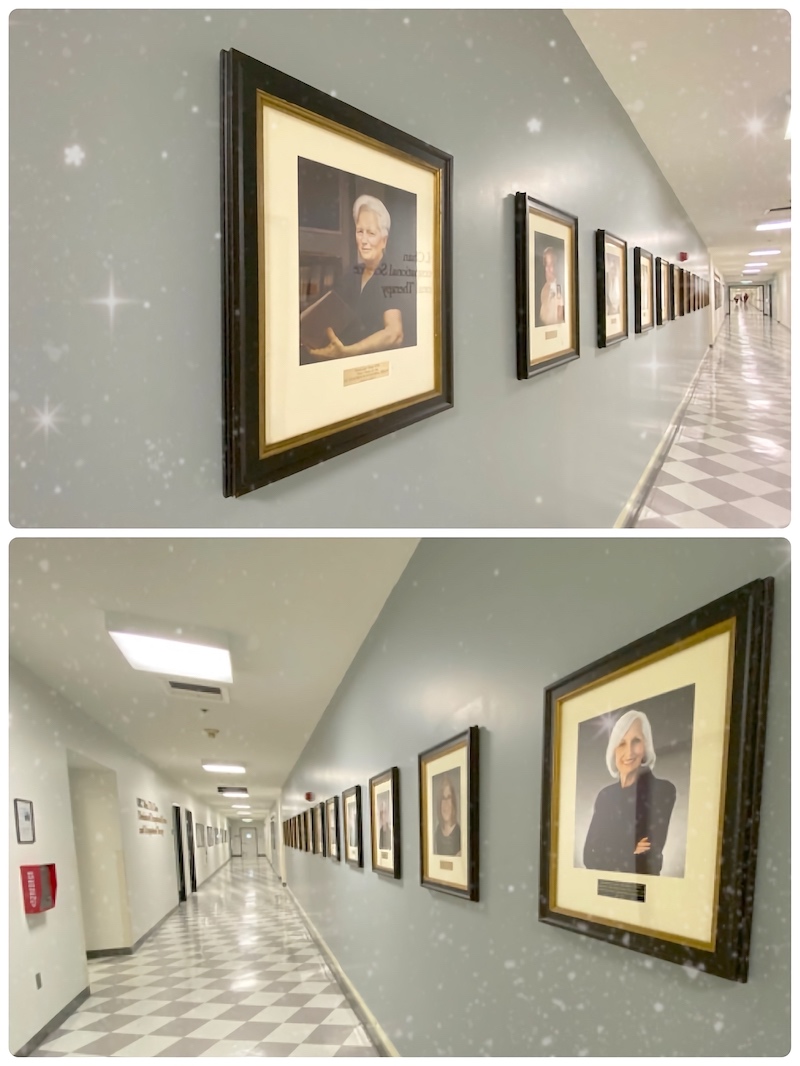Reflections on Gender, Leadership and the OTD

February 24, 2020
by Catherine
I knew I had found my forever occupation (the other definition), when I first walked through the CHP hallway’s “Walk of Fame” adorned with the portraits of Trojan giants of our field: Margaret Rood, A. Jean Ayers, Elizabeth Yerxa, and Florence Clark (just to name a few). It was as if their legacies emanated through the halls, empowering me to make hard pivot, leaving behind my past career managing corporate transactions to delve into the meaningful, life changing profession that is occupational therapy.
Prior to Chan, I attended a small women’s liberal arts college for my undergraduate degree here in the US, and a larger women’s university for my MBA in Korea. I was surrounded by a false sense of security that gender was not an issue, and that my intellect and skills were all I would need to achieve my career goals. Following my interests, I found employment in finance, technology, entertainment, fashion and journalism.
Entering the working world was a wake-up call. The stories of the glass ceiling are real, and in my personal experience, every industry and profession has invisible obstacles for women to succeed. Navigating corporate structures, traditional policies, and the socially embedded expectations for women are hurdles that are no easy feat to overcome alone. In a recent report by World Economic Forum’s the US ranked 53rd out of 153 countries on gender parity, “focusing on four main themes: economic participation, educational attainment, health and survival, and political empowerment.”
While occupational therapy has been one of the few professions that has been dominated by women for over a century, stereotypes about our gender, lack of awareness of the value of occupations, and what occupational therapists bring to the table are the very real barriers practitioners face in the workplace. In fact, research has shown that “Though they may feel discomfort in a feminized field, men do not face structural barriers in occupational therapy . . . In such jobs, men are disproportionately pushed into management positions, with better pay, more prestige, and less hands-on care” (Beagan & Fredericks, 2018). It was no wonder that I was in awe of our “Hall of Fame”.

The Hall of Fame in the main hall of USC Chan
The OTD is a year long program that not only has allowed me to deepen my clinical understanding of meaningful, occupation focused interventions for my clients; it has given me an opportunity to hone my leadership skills and is preparing me to be a leader in my own right. The core courses and faculty mentorship has been integral to this process. The continuous achievements of the USC Chan Trojan network, highlighted in our news fueling the fire. I am inspired and energized to follow in their footsteps. I hope all women in their prospective industries are able to find strong mentors in their field, but if you are an occupational therapist, I sincerely believe there is no better place than the OTD program here at Chan to make that a reality.
Beagan, B. L., & Fredericks, E. (2018). What about the men? Gender parity in occupational therapy. Canadian Journal of Occupational Therapy, 8(2), 137-145. https://doi.org/10.1177/0008417417728524
Jacson, S. (2019, December 23). It will be 257 years before women have equal pay, gender gap report says. NBC News. https://nbcnews.com/news/world/it-will-be-257-years-women-have-equal-pay-new-n1103481
Yeung, J. (2019, December 17). Global gender equality will take another 100 years to achieve, study finds. CNN Business. https://cnn.com/2019/12/17/asia/gender-pay-gap-uk-wef-intl-hnk-scli/index.html
⋯
Next by tag Diversity ⟩
⋯





